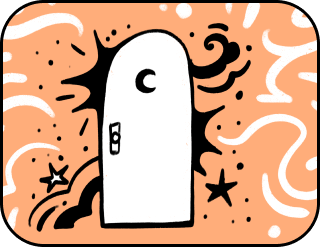How to ruin your film in 10 easy steps
“The director is like Columbus. He wants to discover America, but whole team wants to go home.”
Federico Fellini
“— I’m responsible for nineteen of the twenty top-grossing films of all time.
— Nineteen?
— Yeah, the one about the kid, by himself in his house, burglars trying to get in and he fights them off? I had nothing to do with that one. Somebody sold their soul to Satan to get the grosses up on that piece of shit.”
Serendipity from Dogma (film)
Disclaimer: The editorial team of The Global Technology magazine strongly insists that this article is intended solely for satirical purposes. All advice contained in this article should not be considered recommendations for aspiring directors or anyone else.
Dear Directors,
Allow me to convey a simple, proletarian thought: there is plenty of cinema out there, yet there’s still nothing worth watching. There are days when you toil away at various tasks, getting shavings and dirt under your nails, accumulating viruses, chatting with colleagues, and managing not to be rude to your boss. All this work can only be borne with ease if the evening meal at home is accompanied by a pleasant series.
There’s no denying that Netflix and Marvel have mastered the art of creating films for every taste, but during our rightful evening meals, we long to connect with the world in a way that will allow us to impress our colleagues—who are spoiled by entertaining genres of cinema—with our knowledge the next working day.
It so happens that we at the magazine not only know how to critique but also offer valuable advice. This time, we decided to approach the issue of producing quality films with utmost seriousness and write about what not to do in order to ensure that a film inevitably vs—much like food does after an evening meal. We intentionally made all these tips harmful in order to weed out any directors with insincere intentions right from the start and leave only those who are genuinely committed to delighting their audience with quality feature films.
Tip One: Ignore the script
To avoid any logic and meaning in your film, forget about a good script. It’s simply unnecessary. You can’t please all viewers, and if some of them happen to be acquaintances who find out you’re making a film, then it’s all over: you’ll just end up wandering around, constantly adding new scenes to the script because one friend loves Turkish series while another is fond of dogs.
Try to free yourself from this process! Shoot an improvised film with zero planning: let your actors decide what the story will be about. If the plot completely derails, just shoot more absurd scenes—you can fix everything while editing later. The main thing is that the shooting process is fun!
And to anyone who says that a film without a script is like an airport without a runway, confidently counter with examples.
Example One: Take a deep breath, smooth your hair at the back of your head, look at your interlocutor with annoyance, and slowly begin to argue.
‘Have you heard anything about Terminator 2? Well, this film ended with an aging Sarah Connor sitting in a chair and talking about the peaceful times that came instead of war with machines. At that moment, the camera was showing adult John and his little daughter. But at the premiere, so many people showed up that the directors immediately had an idea to continue the cinematic adventures of the automated cyborg, and they had to forget about the peaceful ending. So they had to urgently rewrite what? Right! — the script. Who knew that the adventures of an automatic combat machine sent from the future to change the past and erase the present would captivate viewers and investors so much that a whole series of mediocre sequels would follow? There you have it—another proof that any script is evil.’

If the person opposite you still has doubts and brings arguments in favor of writing a script, move on to more serious arguments. Straighten your shoulders, extend your head forward, bend your knees, and strike a butterfly pose. Make characteristic hand movements, run exactly two laps around your interlocutor, then start arguing.
‘The famous film called The Butterfly Effect was supposed to end with the protagonist Evan realizing that his ability to rewind time only causes harm and killing himself right in his mother’s womb by strangling himself with his own umbilical cord. Later it turns out that his mother was pregnant twice before him, and both children died as well.’
While your interlocutor is recovering from your winged performance and from what they just heard, continue.
‘Naturally, such a script didn’t suit anyone—it was too bloody for an ending. The script was rewritten. In the new version, Evan burned his diaries and met Kelly. But this predictable script didn’t satisfy even the director himself, so it had to be rewritten again. In the new version, Evan also met Kelly and rediscovered his ability to reshape the future. The meaning of the film was lost; once again, they had to rewrite the script.
And finally, in the official version available to viewers, the main character ends his string of misfortunes but never meets Kelly. So why bother so much with a script if ultimately the filmmakers relied on audience opinions and dreams of box office success?’

If after this example your interlocutor starts squinting and calculating in their mind the difference between a script and box office earnings, hint that it’s not the screenwriter who determines a film’s success but rather its audience. Step aside, pull out a calculator from your pocket, move your lips as if indicating you’re doing some complex calculations, then immediately transition into another argument.
‘They used to know how to make films while caring for audiences too! I remember well that the first interactive film came out in 1967. An unprecedented experiment was conducted by Radúz Činčera from the “New Wave” of Czech cinema. This film was called Kinoautomat. It started with a scene where the main character’s house is on fire. Viewers were invited to take actions to prevent this terrible outcome. The film contained nine interactive scenes in total. Before each one, the action would stop; a moderator would come on stage and advise viewers to choose one option for continuing the film from two available choices. The audience was thrilled! It’s understandable: this simple interactivity created an illusion of control for them. It seemed as though the hero’s fate depended on their choice. In reality, however, the script was structured so that audience voting changed nothing—the character still followed whatever path was laid out by the director; his house still burned down at the end.’
To prevent your interlocutor from twisting your argument in favor of writing scripts (after all, there was one in that first interactive film), take control back.
‘At that time, both audiences and critics saw this technique as satire on democracy and even some form of fatalism: people always think they are masters of their lives when their fate is predetermined from above. A new word in cinema defined its success; it had nothing to do with its script.’

Tip Two: Use Only One Source of Light
Why complicate things? If you want to create an atmosphere reminiscent of 70s horror films, why waste time on different lighting setups and moods? Just take one harsh light source and shine it directly in the actors’ faces. Besides, the fewer visual effects and colors in the film, the less chance the audience will even understand what’s happening on screen. Why overthink it? The main thing is that your characters look like ghosts.
Don’t want ghosts? Use natural light. So what if it’s harder to control? At least everything will feel organic and authentic. Classic artists, for instance, had no additional tools other than the sun, sky, windows, and candles. And they managed just fine. They quietly created their masterpieces without a fuss.
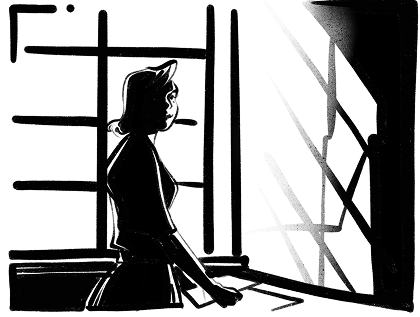
Need to shoot a historical film where the sun blinds all the onlookers during an execution in a marketplace, and there are only storm clouds in the sky? Shoot your peplum using those storm clouds as an omen. And if you absolutely need sunlight, travel with your entire crew—this way you can catch the sun and scout a few more locations for your film.
It’s that simple.
If your concept requires shooting indoors, don’t get flustered either. Let amateurs in the film industry use multiple lighting fixtures to highlight close-ups, accentuate actors’ faces, or draw attention to location details. Don’t fall for all that unprofessional nonsense. A true director knows that to light up actors’ faces, a little light peeking shyly through a keyhole will suffice.
Of course, if you want the audience to see every pattern on the heroine’s fingertips or any other body details, you can always shine a lamp directly in her face until it’s blindingly bright. Why not? A white face conveys freshness and a soft veil of mystery. You might even be called a genius later and receive plenty of awards from the film academy.
Otherwise, you’ll have to play with any light source that appears in the scene. It’s easy to fool the audience: they’ll see a character glowing from the warm light of a desk lamp and get swept away. But you know that lamp is just there for realism; the main light comes from hidden diffusers and a huge Fresnel lamp off-screen. The image looks nice; this kind of light is often called “practical”. But why complicate things?
Again, during night shoots, any off-screen lighting will only get in the way. Close-ups will look much more effective in dark, dimly lit atmospheres or by the light of an ordinary flashlight.
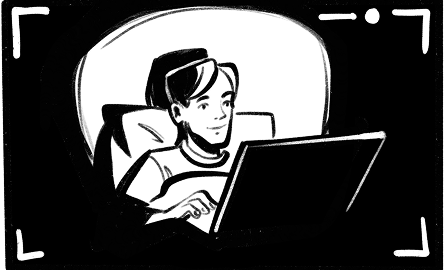
Tip Three: Neglect editing
Any self-respecting director knows that editing is for the weak. Shoot long scenes without any dynamics, allowing the audience to peacefully doze off without being distracted by external stimuli.
Give viewers the chance to relax and not worry about missing important events if you suddenly change locations or if the characters age without finishing their dialogue. A happy life begins with a calm mind, so take your time.
Let’s say, according to the plot, your hero arrives in an unfamiliar city and checks into a hotel. After settling in, as is customary, the hero heads to the bathroom to wash off the remnants of travel dirt and try out the freshly starched towels. The hero (still following the script) takes a clean, smooth towel and places it on the toilet tank, from where a mischievous piece of fabric, already ignoring the script, skillfully slips off and falls onto the toilet brush, knocking over its holder with all its contents.

As a professional director should, you immediately call for a fresh towel and stop the motor. But at that moment, it turns out that the assistants completely forgot to stock up on white towels in advance. Panic ensues; the entire crew calls nearby stores in search of white pieces of fabric, but unfortunately, only colored towels are available, and such hues could ruin the entire film.
In the end, you’ll spend three days shooting that shower scene due to those unfortunate towels, while viewers will see only a few seconds: the hero enters the bathroom, there’s a close-up shot of steam-covered glass in the shower stall, his hand reaches for that coveted piece of fabric, and then he smiles at his reflection in the mirror while carefully adjusting the towel around himself.
If you edit all your scenes together, how will viewers learn about such stories? They won’t. This is the great power of absence of editing.
Tip Four: Use Outdated Technology
Why use modern technology when you can shoot with old cameras that produce poor image quality? The less focus there is, the better. The entire screen can be blurry as if you’re filming through a kaleidoscope. Don’t hold back; mercilessly add terrible sound effects to your film to induce physical discomfort in viewers. It won’t come amiss. The main thing is that your film evokes emotions and sparks discussions.
We’ve prepared a few outdated technologies that will make your future masterpiece truly unforgettable:
1. Use Nitrate Film
When cinema was just gaining popularity, films were shot on nitrate film. It captured frames beautifully but had one unfortunate drawback—it could spontaneously ignite at any moment. This type of film destroyed many theaters and turned going to the movies into a dangerous activity; however, what a sensation it created! “We went to see a movie yesterday. We survived.”
Rumors will spread about your film after using nitrate film; while everyone debates why risking lives was necessary, you can calmly shoot your next film on acetate film and then even in digital format. Such mediums don’t catch fire; therefore films shot on them are remembered less often.
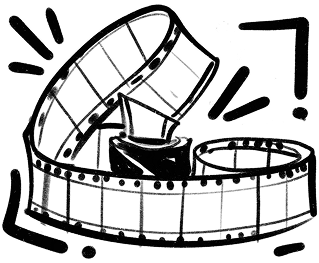
2. Do Dubbing Without Synchronization
In early sound films, there was no proper dubbing technology. Actors would come into studios, watch their scenes, and try to match their lips while re-recording their lines. Sometimes it looked as if someone off-screen was playing karaoke with their lips—beautiful!
This technology will only benefit you. During such dubbing sessions, you can put entirely different lines into your character’s mouth regardless of what they said in the scene. If any cast member dares to question your directorial skills during filming, they’ll be asking for speaking nonsense with profanity using their own lips.

3. Premiere Your Film on an Encrypted Channel
In the 90s and early 2000s, some desperate cinephiles tried to watch films on encrypted channels where green and pink stripes replaced images. Nevertheless, these enthusiasts claimed that if one stared long enough at the screen’s static noise, they could see a movie—but usually such viewings ended with headaches.
Now this outdated technology can also be used for your own film—only true connoisseurs will stick around until the end of the premiere. If they don’t stay until the end, they’re not true connoisseurs anyway; there’s no need for such elements at movie premieres! They imagine thinking they could sit comfortably in plush seats munching popcorn!

4. Cut Your Film into Equal Parts and Show Them Simultaneously Across Different Sections of the Screen
Some directors in the 70s became so enamored with experimentation that they decided to show their films on screens where two scenes played simultaneously from different parts of a movie. Audiences did not receive this innovation enthusiastically because they had to constantly dart their eyes around trying to catch any semblance of a storyline. Rumor has it some attendees never returned to their former selves after such screenings.
But now it’s entirely different! Times have changed; everything moves quickly now—and time is precious! Take care of future admirers of your work ahead of time: cut your filmed masterpiece into an even number of pieces and show them simultaneously. Then viewers can watch an entire film in just minutes! They will surely appreciate saving time—and worldwide fame will come to you even faster.
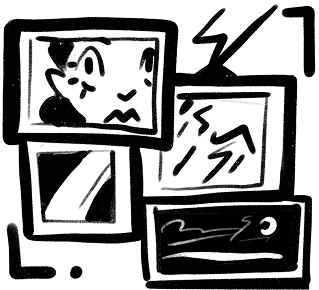
Tip Five: Use Countless Special Effects
Every scene can be enhanced with special effects! Adding an explosion is one of cinema’s most basic principles today. Even if your film tells a story about ordinary village life, it’s worth adding lasers, explosions, roaring lizards, and tongues of flame—everything must be “epic,”; after all, we’re not making some run-of-the-mill picture here!
True masters of directing know that expensive special effects are pointless; therefore there’s no need to spend millions on costly graphics or robots with human faces when you can rely on tried-and-true techniques along with good old human ingenuity:
▪️ In old Hollywood instead of fans they used real airplanes. In The Ten Commandments, storm scenes were filmed by placing actors outside while turning on propellers and watching who would get blown away first from takeoff pads—some extras flew off set without tasting even a minute of fame.

▪️ In Flight of the Navigator, the hero flew an alien spaceship. The film hit screens in 1986 when space tourism was nowhere near reality! How did they shoot those flight scenes? They suspended actors using fresh cow intestines because they were elastic! The actor repeatedly lost consciousness from cow odor but ensured an immortal masterpiece was created.

▪️ Some directors used real human bones in their films too! In Poltergeist (1982), an actress thought she was swimming among fake skeletons until she discovered those bones were real! The producers explained this episode by saying: “Plastic bones were too expensive.”

▪️ In Jaws, mechanical sharks kept breaking down; thus producers found a brilliant solution: they brought an actual dead shark onto set and submerged it underwater hoping it wouldn’t float up too soon! Working with animals back then was easy—ordinary ants were filmed using macro cameras before overlaying those creepy shots onto footage featuring humans—though sometimes “monsters” simply crawled off-screen leading directors into panic as they searched for replacements.

Now we can play freely with special effects: VRs, CGI animations, artificial fire effects—alluring visuals abound—but we’ve forgotten how to live.
Tip Six: Every Film Must Have Intrigue
Only an amateur would think that the film industry exists solely for entertainment. An experienced director knows that any movie is a powerful tool for creating myths, mysteries, and conspiracy theories. Films can contain hidden messages and vague prophecies. These encrypted traces compel viewers to search for meanings that are not always obvious, leading them to rewatch the film dozens of times.
Hollywood has long ceased to be just an entertainment industry. The Dream Factory has now become a vast workshop for producing various kinds of candid confessions that directors carefully hide between the frames.
Critics who dare to doubt you can be convinced with well-known facts.
Fact 1
Stanley Kubrick was constantly suspected of having staged the American moon landing. In the film called The Shining, progressive audiences found some strange hints:
▪️ The boy Danny wears a sweater with the inscription “Apollo 11 USA.”
▪️ The room number around which the events unfold is 237, while in the book of the same name, the room is numbered 217. The explanation is simple—237,000 miles is the average distance from Earth to the Moon.
▪️ In an important scene with a typewriter, the director draws viewers’ attention to the text: “All work and no play makes Jack a dull boy.” However, in Kubrick’s manuscripts, a similar phrase was found but written incorrectly: “A11 work and no play make Jack a dull boy.”
Fact 2
The legendary scene from Orson Welles’ film called Citizen Kane, in which the dying hero utters the mysterious word “Rosebud,” has long intrigued cinephiles. For decades, researchers have speculated about its meaning.
According to the official version, “Rosebud” is a brand name for cheap little sleds that the main character Kane rode on the day he was taken away from his mother.
According to an unofficial version, “Rosebud” is a code word related to the intimate secrets of magnate William Randolph Hearst, who served as a prototype for the character.
Fact 3
The film called The Matrix is a treasure trove of symbolism:
▪️ The name of the main character Neo is an anagram of “One,” hinting at The One.
▪️ The plaque on Trinity’s door, whose name means Trinity, reads “Mark 3:11,” which actually leads to a biblical reference: “You are the Son of God.”
▪️ The name Morpheus speaks for itself—he is the one who awakens people from illusions.
Fact 4
Before Tyler Durden officially appears on screen in Fight Club, he flashes on screen four times. This hints that the main antihero is merely a hallucination of the protagonist.
Fact 5
And what about Quentin Tarantino’s main mystery in Pulp Fiction? What really lies in the black briefcase that emits blinding light?
According to one theory, it contains Marcellus Wallace’s soul; according to another, it holds stolen diamonds from another Tarantino film—Reservoir Dogs.
Convinced? Directors who don’t leave hidden messages in their films are immediately written off from the world of cinema.
To ensure this doesn’t happen to you, we’ve prepared several Easter eggs that you can hide in your film. They will guarantee immediate delight among viewers:
▪️ You can add an extra frame featuring someone’s face that no one recognizes or suddenly replace the main character with another actor halfway through without any explanation. For example, for half of the film, viewers will be addressed by a burly bearded man who will later turn into a slender Doberman dog in part two. When critics ask why such transformations happened to the main character, you can always respond that they should have paid closer attention to the film—and then mysteriously fall silent.
▪️ Be sure to include a scene where there’s an animated conversation among people. Suddenly, at one moment, all characters should blink exactly 37 times in unison while only one character behaves normally. Let numbers 219 peek out from this character’s T-shirt collar. Let the audience wonder what it means.
▪️ At the end of your film, you can leave a black screen with a neon inscription: “LOOK ON THE SHELF TO THE RIGHT.” If viewers have a shelf on their right, they are doomed to eternal life in your film.
After such messages, you will surely be counted among members of a secret society and respected for possessing esoteric knowledge inaccessible to others.
Tip Seven: Justify the Proud Title of Director in Any Situation
When you go to the cinema, showcase your film expertise.
As soon as you notice one of your friends fidgeting, start whispering:
“These directors are always playing around with different tricks. I remember, it was like yesterday, back in 1963, a film called Experiment with Sleep. This British art-house film used the technique of repetitive visual patterns and a monotone voice in the background to put viewers into a trance. In some theaters, audiences fell asleep right in their seats because the one-shot effect acted on everyone like hypnosis. Apparently, this director is using similar techniques since you’ve been demonstrating your perfect yawn for half an hour now.”
The yawning friend will immediately straighten up, promise never to let anyone control their consciousness again, and be amazed at how cleverly you’ve uncovered the director’s tricks.
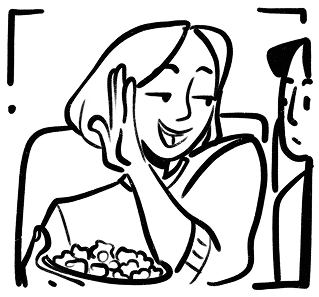
As soon as someone pulls you toward a movie you really don’t want to watch, make your position clear:
“Actually, I’m not a fan of films with DMT effects. Gaspar Noé created a psychedelic trip called Enter the Void in 2009. In this film, the camera moves from a first-person perspective, conveying the effect of the astral exit of the main character’s soul. The visual images, frequency flashes, and non-linear editing create an effect similar to hallucinations. Not only did I feel all my lower chakras during that film, but after watching it, I also uncovered 15 references, 20 allusions, and a whole 6 layers of hidden deep meanings. Now we’re going to watch a movie filled with low-frequency soundtracks, and I’ll have to live with those special effects afterward. No way.”
The person insisting on watching the movie will immediately admit their mistake and offer you some treats.

If after watching the film someone starts praising its grand scale and breathtaking landscapes, shake your head and wearily pull out everything you’ve got in your pocket:
“How many deserted and abandoned film sets have you seen, my friend? I’ve had my share. Let me tell you; it’s not a pleasant sight. For example, for the filming of Waterworld, an entire city was built that was completely destroyed after shooting wrapped up.
In The Truman Show, they used a massive artificial reality that now stands as a lifeless set for yet another cinematic utopia. Once upon a time for the film Cleopatra, colossal sets of Ancient Egypt were erected in Italy. After the filming ended, the studio simply left them in the sands. Tourists and archaeologists still find ruins of those sets today.
The village of Matmata used as Luke Skywalker’s home in the Star Wars saga still stands but is gradually being abandoned by locals. Some landscapes of Tatooine created in the desert are already completely buried under sand. In Hawaii, after filming Jurassic Park, rusting gates and half-destroyed sets remain that have become part of nature; now they offer tours there. And don’t get me started on The Crow (1994), where Brandon Lee tragically died during filming—the son of Bruce Lee. After that tragedy, part of the set was abandoned and dismantled while some props still stand in remote corners of Hollywood considered cursed. Personally, as a seasoned investor, I only calculate based on long-term distances and responsibly declare that such irrational use of filming materials severely harms budgets and ecology.”
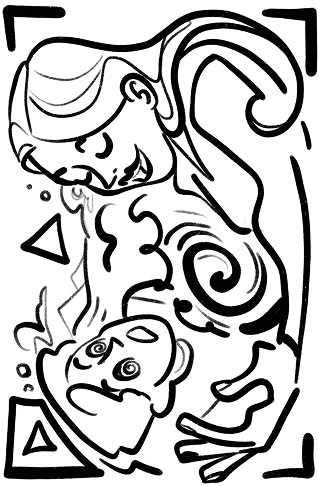
Tip Eight: Make Good Films; Don’t Make Bad Ones
Experienced directors know that a powerful and captivating plot is essential for a good film. Without a solid story, any movie—even one packed to the brim with special effects—will be forgotten faster than a fresh spoiler for Game of Thrones.
The plot should be as strong as the smell of alcohol after a binge so that viewers laugh, cry, call upon higher powers during viewing and eagerly await what comes next while biting their elbows.
Coming up with an interesting story for a film is not easy! Viewers can sniff out any falsehood like a fox even through the screen. That’s why we’ve come up with several timely plots that will surely leave your future audience captivated.
Horror Film Plot: THE CHAIR THAT WON’T LET GO
In this story, the main character buys himself a comfortable chair. As soon as this new chair arrives at his home, his life begins to change—the chair won’t let him go! As soon as he sits down—he can neither stand up nor move or turn to his side. To free himself from its plush embrace, he tries various methods: calling friends over, attempting hypnosis—even summoning an exorcist! But the chair only pulls him deeper into its soft belly. By the end of the film, he becomes part of the furniture; now his new landlord sits on this chair unaware that she’s sitting on living flesh where a soul still flickers.

Comedy Film Plot: BLACK TEA THAT CHANGES EVERYTHING
In this story, our hero accidentally finds an old box of tea made back in the 17th century in his cupboard. He decides to try this drink; he drinks one cup and becomes Napoleon; then he turns into Genghis Khan; finally transforming into Churchill while filling the room with smoke from strong cigars. The plot keeps viewers on edge: our hero wants to stop drinking tea but can’t do it! The film ends with him turning into a teapot and silently steaming away.

Family Film Plot: GRANDFATHER IN THE POCKET
In this story, our main character inherits his grandfather’s old jacket. In one pocket of this jacket lies his grandfather himself! Small but grumpy! It turns out Grandpa somehow hid there during an experiment with quantum technology. Now Grandpa gives advice while complaining about modern youth and demands to be taken along in his pocket for football games and dates! But what will happen if our hero accidentally washes the jacket?

Timely Satirical Film Plot: FAST, EXPENSIVE AND POINTLESS!
In this story, our main character is an average director who boasts to an investor that he’ll make an Oscar-winning film in 24 hours if given money. The investor agrees and writes him a check for $100 million! Now our hero has two problems:
1. He doesn’t know how to make movies.
2. He has no idea what it will be about.

The protagonist grabs any random script he finds; runs it through an auto-translator; reads it backward; casts everyone who happens to be in his office—a courier, cleaner, and purchasing manager—as actors; even casting a random homeless person who, he convinces, is starring in a reality show! Locations? Wherever they manage to shoot!
According to this plotline half of the movie will be filmed at a café where there’s free Wi-Fi; while he’ll shoot half on random phones belonging to passersby.
On premiere day audiences will scrutinize every frame closely, noticing that in one scene our protagonist is played by the cleaner while another actor takes over because her shift ended and she went home! During an epic monologue instead of music there’ll be an answering machine recording playing; while at last scene will appear formatted like stories on social media! Critics will see genius parodying Hollywood within it calling it “a new wave in art.” Our protagonist wakes up famous!
But no one will ever understand what this movie means—not even those who suggested this plot!
Linear-arithmetic synthesis is based on sound formation. We’ve synthesized the perfect formula of facts and interest.
Thank you!



